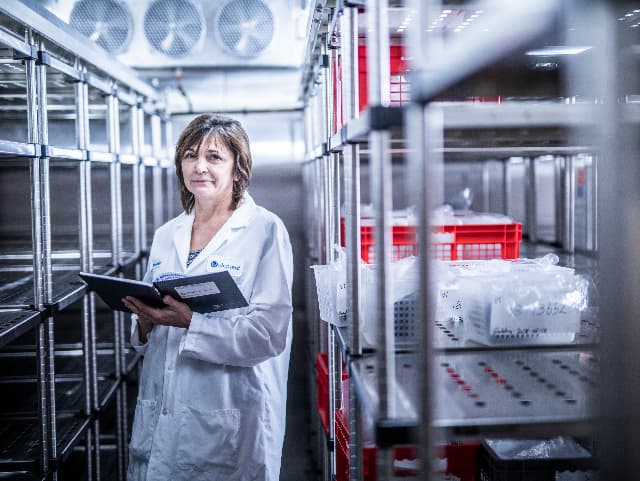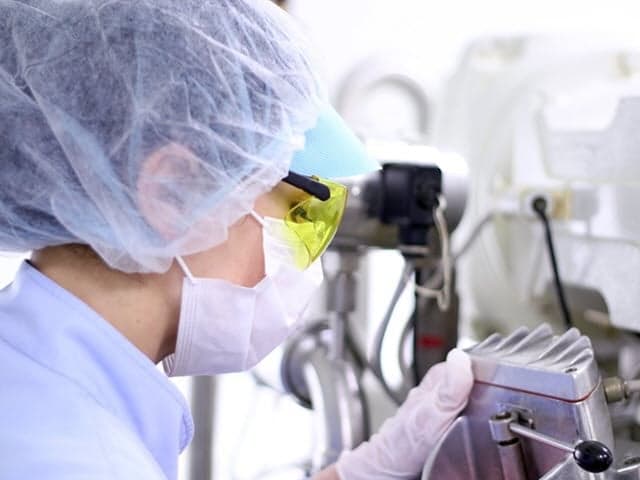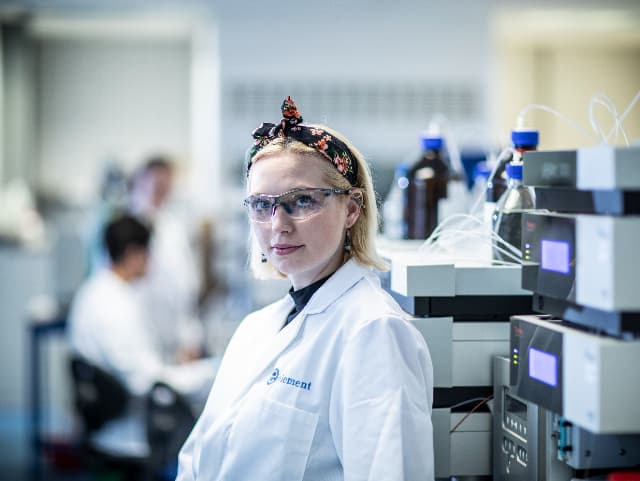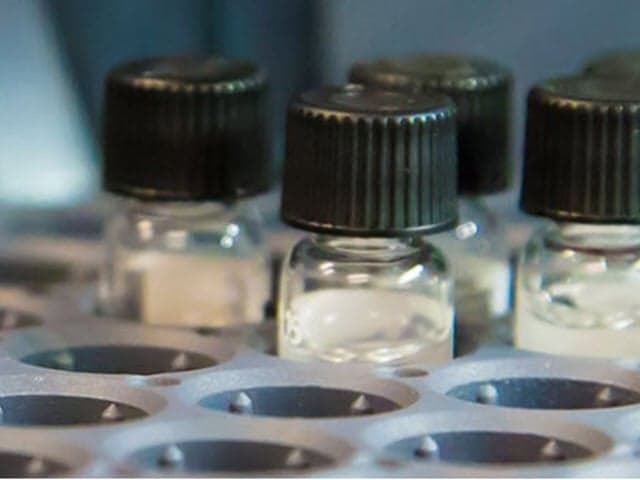Stability and Forced Degradation Testing of Pharmaceuticals and Biologics
Accelerate market entry and protect product quality with precision-driven stability testing and forced degradation studies from Element. You'll gain access to specialized storage conditions, validated analytical methods, and expert guidance to address your unique pharmaceutical challenges. Together, we’ll keep your product development on track and ensure data integrity throughout your product’s development lifecycle.

What is Stability Testing and Forced Degradation Studies for Pharmaceuticals and Biologics at Element?
Stability testing evaluates pharmaceutical and biological product quality over time under varying environmental conditions. Forced degradation experiments are a valuable tool to evaluate the stability of a drug substance and understand its potential impact on a drug’s potency and purity as well as on patient safety. The impurity profile of a drug substance, stressed under various conditions, informs analytical method development, aids in defining specifications and assists in the formulation of stable dosage forms.
At Element, our comprehensive analytical services track product performance, identifying critical quality attributes and potential degradation pathways throughout the entire development lifecycle. Our stability programs provide the robust data you need to support your development strategy and regulatory submission, ensuring consistent product quality from early development through commercialization.

What Can Element Offer You For Stability Testing and Forced Degradation Studies?
Products and materials we test
Products and materials we test
Element provides comprehensive stability testing that addresses the intricate challenges of pharmaceutical and biological product development. Our approach spans the entire product lifecycle, from preclinical stages through clinical trials and post-approval studies, ensuring rigorous quality assessment across diverse product types. Our analytical experts deliver robust testing programs that generate high-quality data to support your development milestones while meeting regulatory requirements.
Key tests offered
Key tests offered
Our key testing capabilities include:
- Detailed characterization of drug substances and products
- Comprehensive analysis of impurities and degradants
- Evaluation of physicochemical characteristics
- Assessment of dissolution profiles
- Examination of disintegration and friability for solid-dose products
- Analysis of rheology and viscosity for topical formulations
- Specialized testing for large molecule drug products
Pharmaceutical Stability Testing:
Our expert scientists work with clients to create stability programs for drug substances and products, covering impurities, degradants, and changes in physicochemical properties like dissolution and disintegration of solid-dose products, and rheology of topical formulations. Our stability chambers offer 24/7 monitoring with backup generators to ensure continuous testing, supporting a variety of storage conditions, including cGMP-compliant environments for commercial stability studies and expiration dating.
Our services include:
- ICH stability testing services
- Stability-indicating assay development, including forced degradation studies
- Real-time & long-term stability
- Accelerated stability
- In-use studies
- Beyond-use stability
- Photostability testing to ICH guidelines
- Formulation evaluation stability
- Follow-up stability testing
- Freeze-thaw stability studies
- Stress stability testing
- R&D stability testing
- Identification of unknown degradants and impurities
- Registration batch stability testing
- In-use stability studies
- Sterility and microbiological assessment
- Container-closure integrity testing
Biologics Stability Testing:
Biologic drugs require complex analytical methods due to their environmental sensitivity, batch-to-batch variability, and formulation complexity. Our stability testing programs are tailored to each product, using advanced methods and instrumentation. We focus on identifying degradation pathways and comprehensively evaluating critical quality attributes (CQAs) for biologics like proteins, biosimilars, and antibodies. Our teams conduct forced degradation and long-term stability studies, leveraging a robust library of platform methods to assess impurities and product quality.
Forced degradation studies:
At Element, we follow the drug stability guideline Q1A (R2), which involves stress studies on a drug molecule to determine its intrinsic stability characteristics and allows for the identification of degradation products.
Our experts support stress studies by robust analytical procedures to determine the stability of molecule and help you select proper formulation and package, and provide suitable storage conditions and shelf life for your drug products and drug substances.
Our services include:
- Protocol design for degradation studies defined by leading chemists in the field
- Identification of degradation products
- Development reports providing a complete history of the forced degradation study design and resulting degradation profiles from all stress conditions
We have a proven track record of successfully developing dozens of stability indicating assays based on degradation data.
Methods and solutions offered
Methods and solutions offered
Element delivers advanced analytical solutions that meet the most complex regulatory requirements. Our comprehensive approach includes detailed testing programs designed to generate the specific data needed for your product, with analytical expertise that addresses your product's unique characteristics. Our comprehensive approach includes:
- Development of stability-indicating analytical methods
- Identification of unknown degradants and impurities
- Specialized analytical techniques for large molecule testing
- Advanced platform methods for precise product characterization
- Comprehensive quality attribute evaluation
- Support for multiple regulatory submission pathways
- Customized analytical strategies for unique product formulations
Stability-indicating analytical methods for large molecule stability programs:
- SDS-PAGE or CE-SDS
- Western blot
- Charge heterogeneity (cIEF)
- Forced degradation studies
- Stability-indicating chromatography and size-exclusion chromatography (U/HPLC)
- Spectrophotometry
- Peptide mapping of proteins and peptides
- Aggregation analysis by dynamic light scattering (DLS)
- Total protein quantification by BCA or A280
- Glycosylation studies
- Post-translational modifications (PTM)
- Purity assays
- Cell-based bioassays and in vitro enzymatic activity assays
- pH, osmolality, dissolution, and appearance
- Subvisible particulates and moisture content
- Active ingredient determination
- Container-closure integrity
- Endotoxin, microbial enumeration and sterility testing
Storage conditions for large molecule stability studies:
- Cryogenic freezers
- 25˚C/60% RH
- 30˚C/65% RH
- 40˚C/75% RH
- 30˚C
- 2-8˚C
- -20˚C
- <-60˚C
Stability program support for regulatory filing pathways:
- 351(a) Biologics license application (BLA) for innovator biologics
- 351(k) Pathway for biosimilars and interchangeable biologics
- NDA (New drug application)
- 505(b)(1) Investigational new drug (IND) application
- 505 (b)(2) New chemical entity (NCE) pathway
- 505(j) Abbreviated new drug product (ANDA) for generic drugs
- OTC (Monograph-based or IND-based)
- INAD (Investigational new animal drug)
- NADA (New animal drug application)
- ANANDA (Abbreviated new animal drug pathway for generic new animal drugs)
- CNADA (Conditional approval for new animal drugs)
Cutting-edge equipment we use
Cutting-edge equipment we use
Our state-of-the-art testing infrastructure includes:
- Advanced stability chambers with 24/7 automated monitoring
- Backup generators ensuring continuous testing capabilities
- Specialized instrumentation for large molecule analysis
- Multiple storage condition chambers
- Precise environmental control systems
- Advanced analytical equipment including:
- Dynamic light scattering
- Spectrophotometry
- Sophisticated chromatography systems
- Specialized protein and peptide analysis tools
- State-of-the-art spectroscopy instrumentation, including:
-
- Quadruple/time of flight tandem mass spectroscopy (Q-TOF)
-
- 500 MHz Nuclear Magnetic Resonance (NMR) equipment
Which labs offer this service
Which labs offer this service
Customized stability solutions
Standards we test to and products we test
- ICH Q1A-F Guidelines
- ICH Q5C Requirements
- FDA Regulatory Standards
- VICH International Harmonization Standards
Pharmaceuticals
- Oral solid dosage forms
- Parenteral medications
- Topical formulations
- Biological therapeutics
- Veterinary pharmaceuticals
Biologics
- Proteins
- Antibodies
- Biosimilars
- Peptide-based drugs
- Cell-based therapies
- Gene therapies
Your Challenges, Our Solutions
Regulatory complexity transformed into clarity
Product integrity optimized proactively
Sensitive formulations expertly managed
Degradation pathways fully characterized
Why Choose Element

Global testing network
Comprehensive analytical capabilities
Regulatory-compliant testing
Scientific innovation
Frequently asked questions
What regulatory pathways can Element support?
Our deep regulatory knowledge empowers you to prepare robust Chemistry, Manufacturing, and Controls (CMC) sections with comprehensive stability data. We support multiple regulatory pathways, including IND, ANDA, NDA, and international submissions, significantly enhancing your chances of successful regulatory approval with our proven track record of complete and compliant CMC support.

Explore our global network of labs and find your nearest location
VIEW ALL LOCATIONSRelated services

Pharmaceutical Testing Services
Element leads the way in pharmaceutical testing services, delivering trusted expertise from prototype to analysis and finished product. With 150+ global pharmaceutical experts and 30+ years of experience.

Analytical Method Development & Validation
Element's regulatory and industry experts have a proven track record of successfully developing and validating fit-for-purpose, accurate, and reliable analytical methods based on established CDER/ICH and FDA guidelines and procedures.

Biopharmaceuticals & Biologics Analysis Services
Our clients develop safe, efficacious products with confidence thanks to Element’s Biologics and Advanced Therapy Medicinal Products (ATMPS) testing services.

Pharmaceutical Quality Control Testing
Element provides pharmaceutical quality control testing, covering raw materials, APIs, and finished products. Our expert analytical development and validation help meet regulatory requirements and support all phases of product development.

Chemistry, Manufacturing and Controls (CMC) & CDMO Testing Services
Element provides specialized analytical testing services designed for CDMOs, offering flexible capacity, regulatory compliance, and advanced capabilities that enable successful client program delivery across all development phases.
